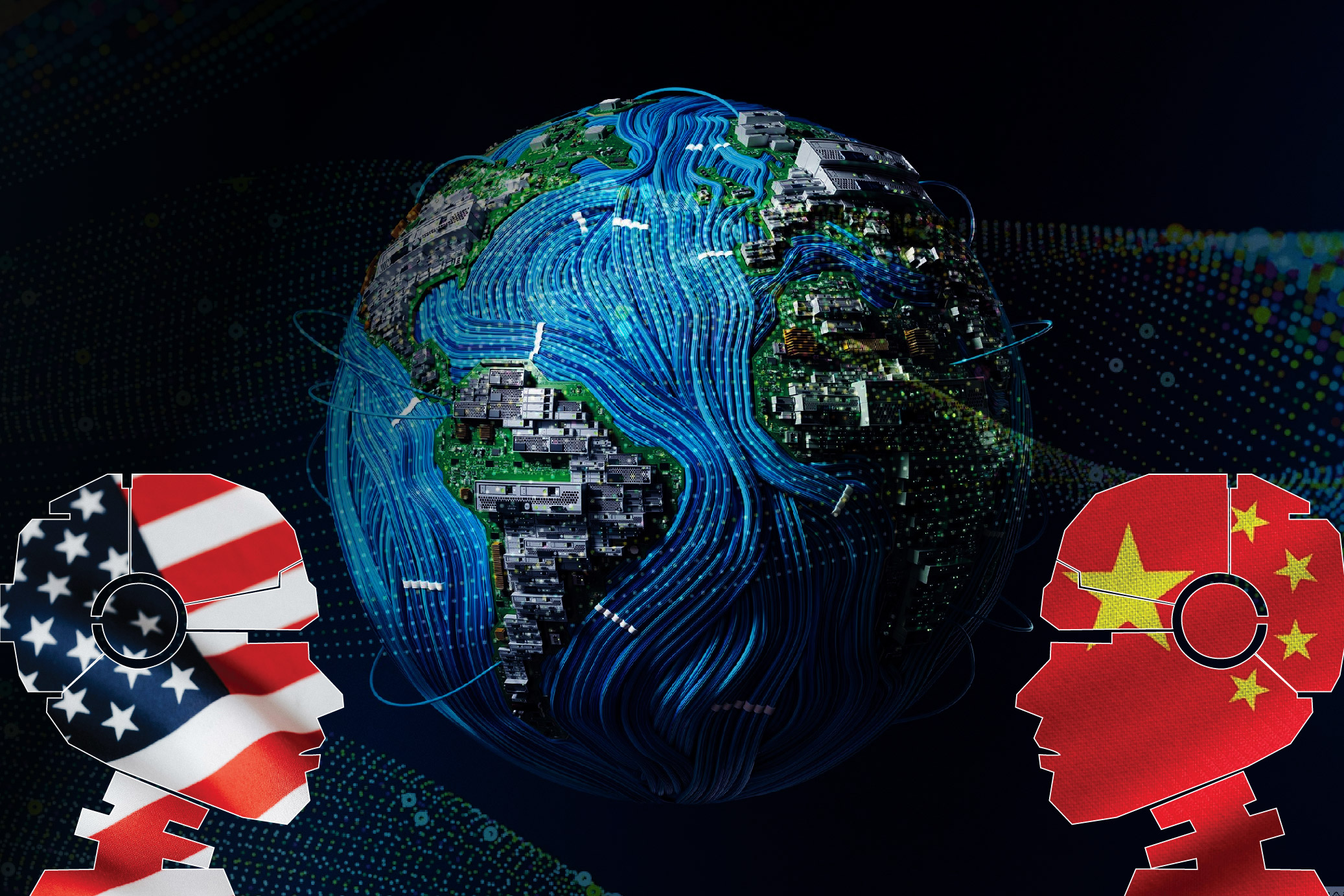Exploring the escalating tech sanctions between the US and China, examining their impact on global innovation, trade dynamics, and the future of technological dominance.
In December 2024, China announced a ban on the export of critical high-tech materials, such as gallium, germanium, and antimony, to the United States, considerably escalating the trade war between the two world powers. Widely seen as a retaliation against U.S. restrictions on semiconductor technology exports to China, the move intensifies the ongoing tech rivalry, the implications of which are far-reaching, affecting global supply chains, technological innovation, and geopolitics.
Background of the Trade Dispute
The U.S. has been implementing strict measures to limit China’s access to advanced semiconductor technologies, using national security concerns as a reason. These measures include export controls on chip-making equipment and restrictions on Chinese tech giants like Huawei, and in more recent development, a possible ban on TP-Link, the world’s top provider of Wi-fi devices. In response, China has decided to leverage its dominance in the production of rare earth elements and critical minerals.
Gallium and germanium are essential for manufacturing semiconductors, solar panels, and fibre optics, while antimony plays a vital role in producing batteries and military-grade equipment. China accounts for approximately 98% of global gallium production, which is crucial for creating semiconductors and light-emitting diodes (LEDs). With a 60% share of global production, it also dominates germanium which is used for fiber optics, infrared optics, and solar cells. China also holds a significant production edge of another material, antimony, used in flame retardants, batteries, and military applications.
THE TECH WAR BETWEEN CHINA AND THE U.S. IS PART OF A LARGER GEOPOLITICAL STRUGGLE FOR DOMINANCE IN THE 21ST CENTURY. BOTH NATIONS VIEW TECHNOLOGICAL SUPERIORITY AS A CORNERSTONE OF THEIR ECONOMIC AND MILITARY POWER.
China’s decision to restrict the export of these materials is seen as a tactical use of resources to respond strongly to U.S. policies and is expected to impact the U.S. heavily, as U.S. semiconductor and defence industries are among the most vulnerable to China’s export ban. These industries rely heavily on gallium and germanium for producing advanced microchips, telecommunications equipment, and military technologies. The export restrictions could result in supply chain disruptions, especially if U.S. companies face challenges in securing alternative sources for these materials, leading to production delays and increased costs. It could also mean increased prices, as scarcity of these materials in global markets could drive up prices, affecting not only the tech industry but also sectors like renewable energy and defence. A third and perhaps the longest lasting impact could be the innovation slowdown, brought about by the sanctions. Limited access to critical materials might hinder research and development in cutting-edge technologies, potentially slowing down advancements in AI, quantum computing, and 5G networks.
Global Supply Chain Concerns
The implications of China’s move are not restricted to the US, however. It comes with global repercussions, as many countries depend on its exports for critical materials. The European Union and Japan, for instance, have expressed concerns over their reliance on China for rare soil and other high-tech minerals.
The move could also prove counter-effective to China as the export ban could fast-track efforts to diversify supply chains and reduce dependence on Chinese materials, exploring alternative sources for these minerals. Potential suppliers include Australia, Canada, and African nations, which have significant untapped reserves of rare earths and critical minerals. These are, however, measures that will need to be taken over time, as developing these resources will require substantial investment; they will find it difficult to address immediate shortages.
The Semiconductor Industry’s Challenges
The global semiconductor industry is already facing supply chain issues and geopolitical tensions, and the U.S. adding nearly 200 Chinese firms to its trade restriction list, further complicates China’s access to advanced chip-making technologies. Meanwhile, China has been investing heavily in its semiconductor sector to achieve self-reliance.
Despite strenuous efforts, China remains heavily dependent on foreign suppliers for high-end chip-making equipment, such as lithography machines and electron-beam inspection systems. From the looks of it, the export ban on materials like gallium and germanium is likely an attempt to exert leverage over the U.S. and allied nations that dominate the semiconductor equipment market.
AS BOTH NATIONS SEEK TO REDUCE THEIR INTERDEPENDENCE, GLOBAL SUPPLY CHAINS ARE BEING RECONFIGURED. THIS DECOUPLING IS LIKELY TO CREATE INEFFICIENCIES AND RAISE COSTS, BUT IT MAY ALSO SPUR INNOVATION AS COUNTRIES INVEST IN ALTERNATIVE TECHNOLOGIES AND SUPPLY SOURCES.
Strategic Implications for China and the U.S.
The tech war between China and the U.S. is part of a larger geopolitical struggle for dominance in the 21st century. Both nations view technological superiority as a cornerstone of their economic and military power. The rivalry extends beyond semiconductors to areas like AI, quantum computing, and space exploration.
China’s export ban emphasises its willingness to use economic tools to further its geopolitical goals. However, this strategy involves some risks. The ban could push countries to accelerate efforts to reduce reliance on Chinese materials, ultimately weakening China’s leverage. The export ban presents opportunities for countries like Australia, Canada, and Brazil to position themselves as alternative suppliers of critical materials. These nations have significant reserves of rare earths and critical minerals but face challenges in scaling up production. Investments in mining, refining, and processing facilities will be crucial to meeting global demand.
Japan and the European Union are also likely to play a role in diversifying supply chains. Both have been investing in technologies to recycle rare earths and develop substitutes for critical materials, reducing their dependence on Chinese exports.
The export ban reflects a broader trend of technological and economic decoupling between China and the U.S. As both nations seek to reduce their interdependence, global supply chains are being reconfigured. This decoupling is likely to create inefficiencies and raise costs, but it may also spur innovation as countries invest in alternative technologies and supply sources.
For the U.S., the export ban serves as a sounding alarm to invest in the production of critical materials domestically. The Creating Helpful Incentives to Produce Semiconductors (CHIPS) Act and other initiatives aimed at boosting the semiconductor industry may need to be accompanied by policies that support the mining and refining of rare earth elements and critical minerals.
To sum it all up, while the export ban poses challenges for the U.S. and its allies, it also presents an opportunity to invest in domestic production and diversify supply chains. The long-term impact of these measures will depend on how effectively nations adapt to the changing geopolitical landscape and reduce their reliance on Chinese materials. As the tech war unfolds, it will shape the future of global innovation, trade, and power dynamics.















